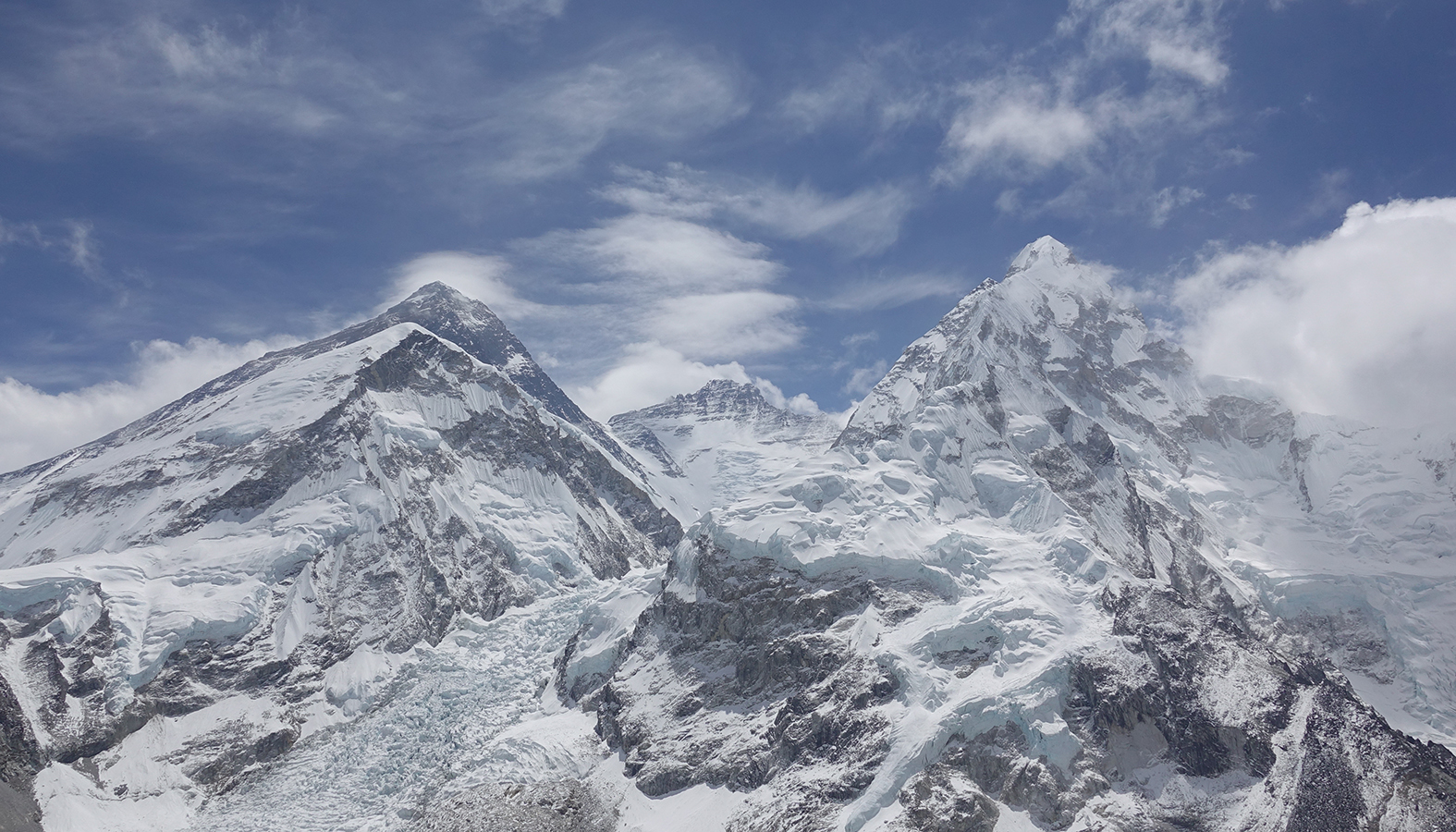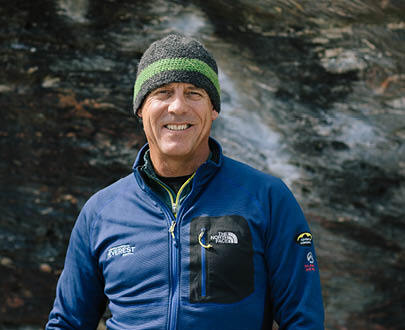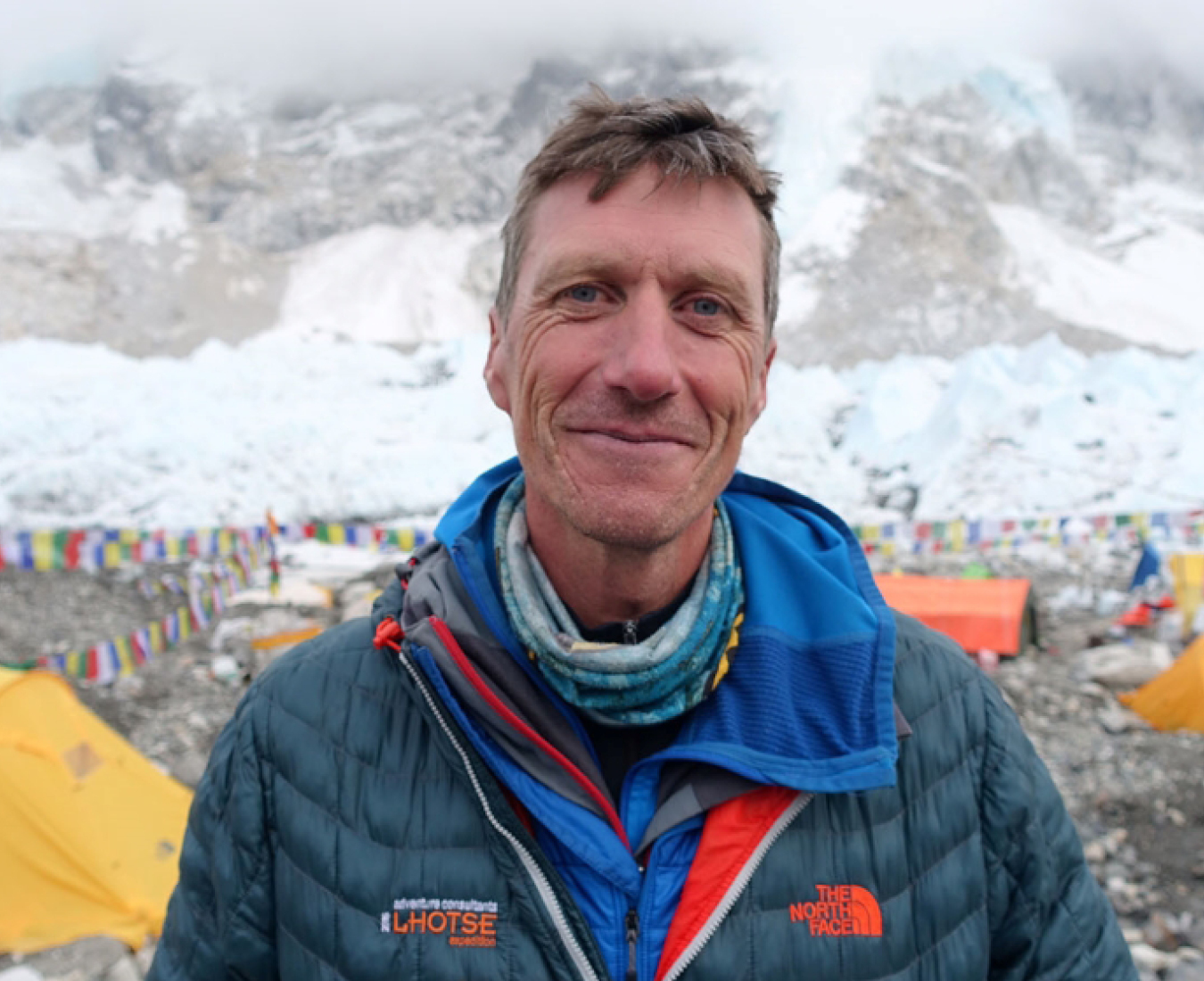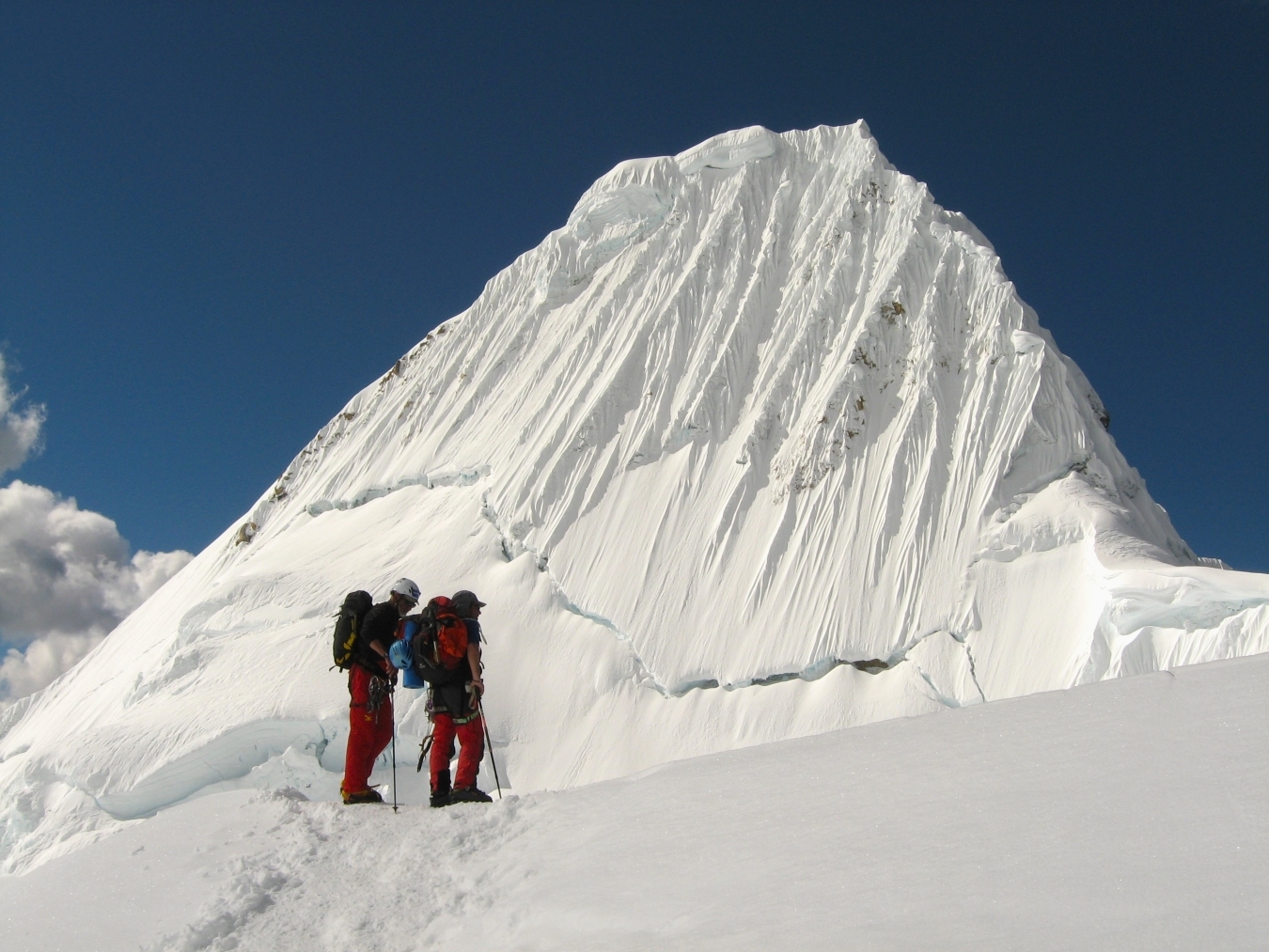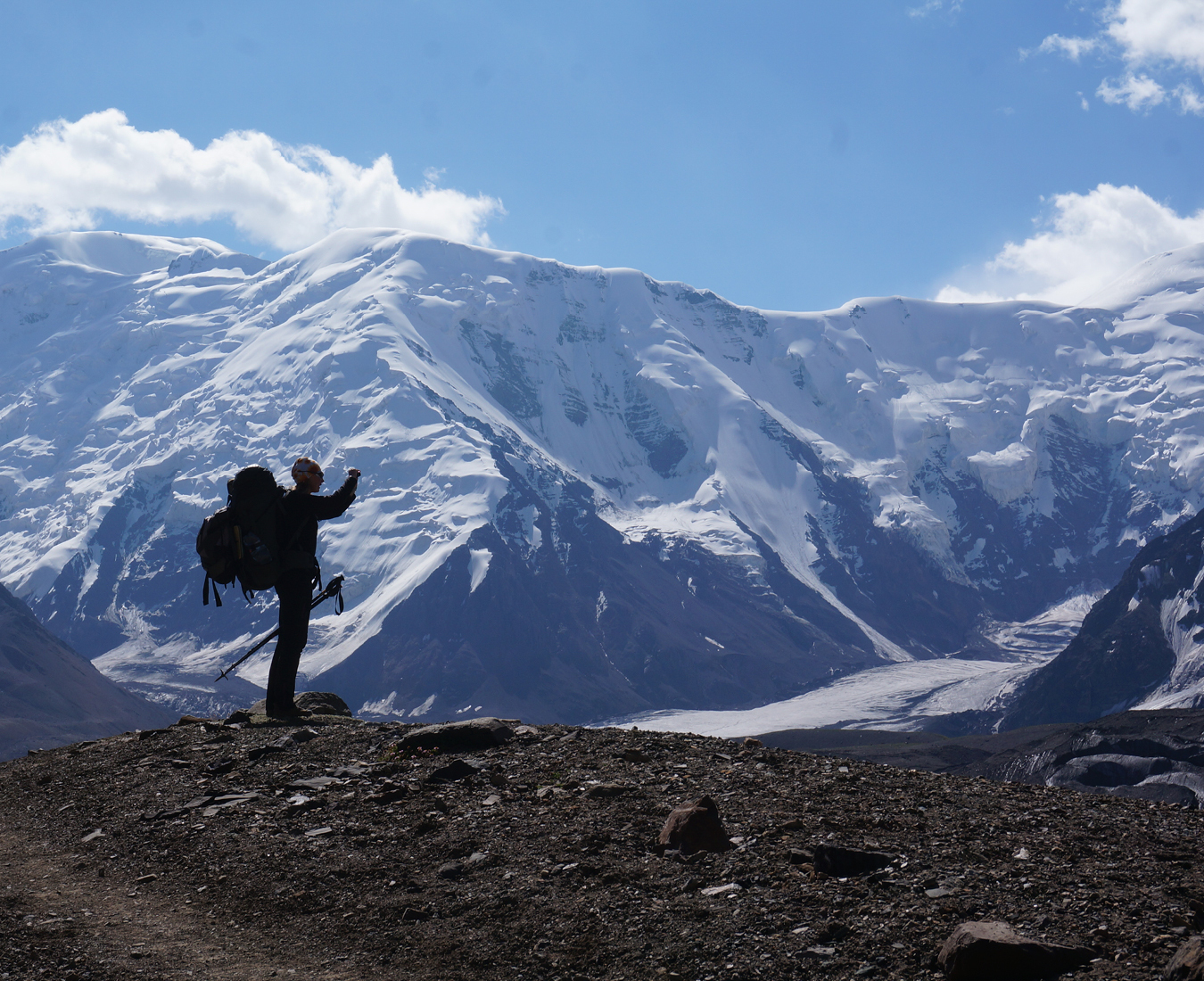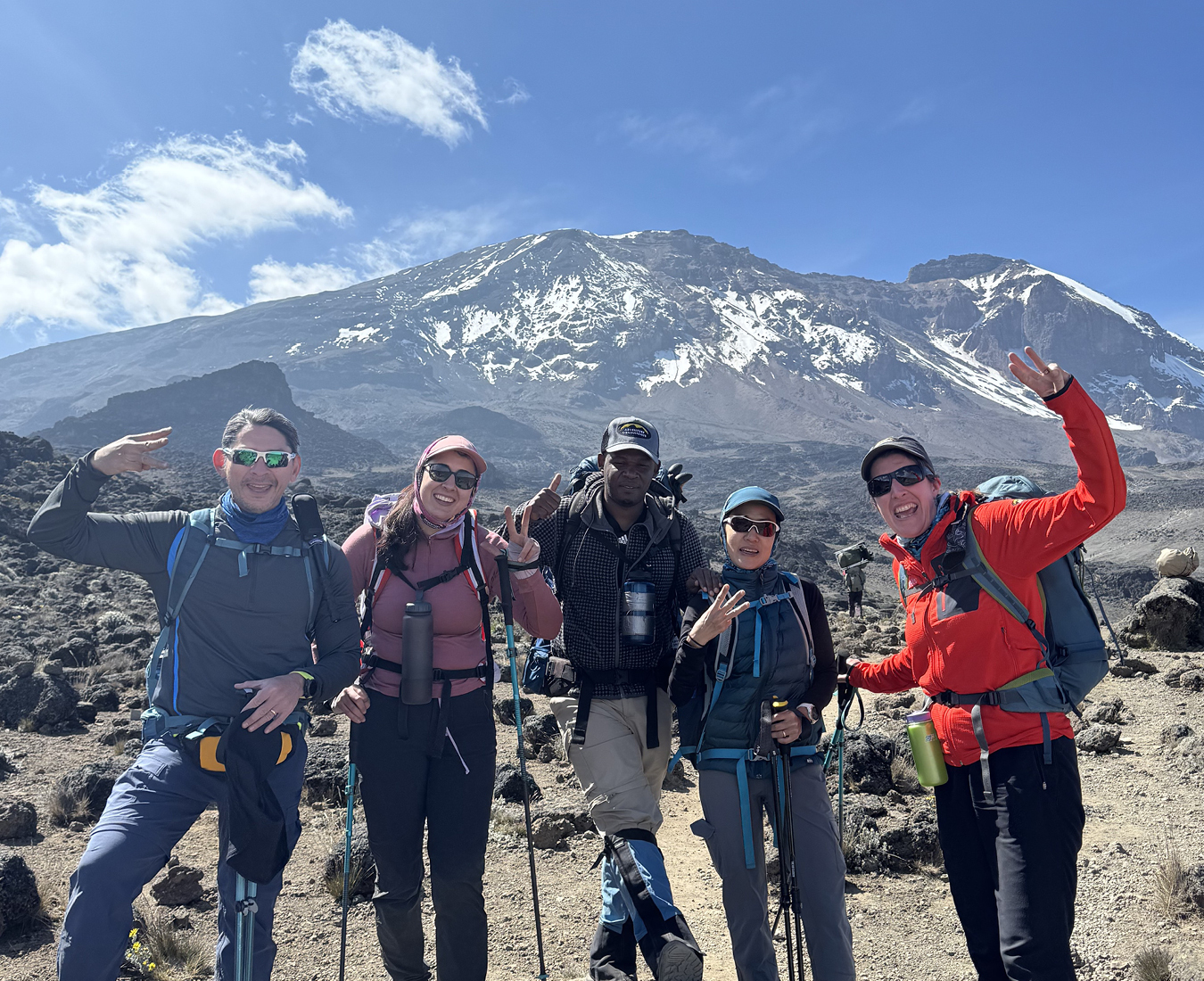The need for exceptional physical fitness cannot be over-emphasised. A regular, strenuous programme must be followed for many months to achieve the level of fitness required. We recommend a training programme tailored to mountaineering such as those from Uphill Athlete.
Revered by many, attempted by few, the Triple Crown sits as the world's ultimate high-altitude mountaineering prize. Join Adventure Consultants and climb Everest, Lhotse and Nuptse— three epic, high-altitude mountains in one expedition!
There are few mountaineering prizes greater than the Triple Crown, consecutive summits of three of Nepal's highest peaks—Nuptse, Everest and Lhotse in one expedition. It's not an adventure for the faint-hearted, it takes a huge amount of strength and determination, but if you think you have the courage to take on the Triple Crown, Adventure Consultants will take you there.
Our Triple Crown Expedition begins with a low-key acclimatisation climb on Lobuche, a 6,119m/20,075ft peak close to the Everest Massif. Here you'll have the chance to solidify your acclimatisation, and eliminate the need for one rotation on Everest. Following our Lobuche ascent we move to Everest Base Camp and prepare in earnest for the Triple Crown.
Nuptse, the smallest of the 3 summits at 7,861m/25,790ft, is climbed first. Often overlooked by climbers for it's more popular neighbours, Nuptse is not a mountain to underestimate, it's a steep and arduous climb to the summit but the views from the top are spectacular. Following Nuptse you'll return to Base Camp for a period of rest before the next challenge, the world's highest peak, Everest (8,850m/29,035ft) then Lhotse (8,516m/27,939ft) the next day!
The Triple Crown is an elusive glory, as yet no one has ever managed to complete the three summits in one season. It’s an epic undertaking, but it’s not impossible and if you are seeking a challenge then talk to us about how we can make the Triple Crown your next big adventure!
- Be one of only a handful of climbers to complete the Triple Crown in one season!
- Climb with the pioneers of Everest expedition guiding
- Undertake a challenge of truly epic proportions
Climbing Ability
Climbing Ability
Advanced
Elevation
Elevation
8,850m/29,035ft
Duration
Duration
54 days
Location
Location
Nepal
Arrive in Kathmandu, Nepal
Trip preparation and gear checks
Fly to Lukla 2,860m/9,383ft, trek to Phakding 2,610m/8,563ft
Trek to Namche Bazaar 3,440m/11,286ft
Acclimatisation day and sightseeing Namche Bazaar
Namche Bazaar to Phortse 3,950m/ 12,959ft via the Mong La Pass 3,970m/13,025ft
| Phortse to Pheriche 4,270m/14,009f |
Rest day in Pheriche and acclimatisation hike
Trek to Chhukung 4,730m/15,518ft
| Climb Chhukung Ri 5,550m/18,209ft |
| Trek over Kongma La 5,535m/18,159ft to Lobuche 4,925m/16,2047ft |
| Rest day and preparations |
Climb to Lobuche High Camp 5,400m/17,720ft
Summit Lobuche East 6,119m/20,075ft. Return to Lobuche
Trek to Everest Base Camp
Rest days and preparations at Base Camp
Establish camps and acclimatise on Nuptse
Rest days at Base Camp
Nuptse 7,861m/25,790ft summit climb
Rest days at Base Camp
| Everest 8,850m/29,035ft and Lhotse 8,516m/27,939ft summit climbs |
Pack up and depart Base Camp
Trek to Lukla
Fly from Lukla back to Kathmandu
Depart for home

Departures and Pricing
| Start/End | Departing from | Quantity | Pricing | Notes | Book |
|---|---|---|---|---|---|
| 7 Apr - 30 May 2026 | Kathmandu, Nepal | Available | POA | ||
| Book Now | |||||
Looking for a specific date? Book a private expedition
PREPARE
You must be able to efficiently climb ice, snow and rock terrain, multiple days in a row. Climbers will ideally have a broad set of climbing skills from basic rock climbing to advanced cramponing on snow and ice and strong rope skills such as rappelling and rope ascending. You should be comfortable with camp craft and self-care at high altitude.
Prior ascents of multiple 6000-7000m peaks are required (such as Denali, Aconcagua, Peak Lenin, 6000m peaks in Nepal, or the Ecuador Volcanoes) and a prior ascent of an 8000m peak, such as Cho Oyu, is strongly recommended. This will allow you to fine-tune your skills and equipment and discover how you personally cope with extreme altitude.

When you climb with Adventure Consultants you'll join a small team of companionable people who are focused on reaching the summit in good style with the highest level of support and safety standards possible. You'll enjoy the best standards of food and equipment that are attainable - not just at Base Camp, but where it counts the most; on the mountain.
Our methodology and tactical approach to climbing 8,000m peaks has seen us achieve the highest success rates and our extensive experience gives us the edge when it comes to the big decisions. We provide a consistently higher Sherpa and Guide ratio than any other operator, resulting in more support and backup for your summit attempt and therefore a greater safety margin and chance of success.
In the interests of giving you the most optimal chance to summit, we limit our team size to ensure the team summits on the best weather day; sometimes there is only one summit day! Large teams offering cheap climbs often miss out as they split their groups over several potential summit days.
Our guides are seasoned professionals certified by the International Federation of Mountain Guides Associations (IFMGA) to ensure your safety throughout the expedition. Our experienced Sherpa team is enthusiastic, motivated, and regarded as the strongest and most cohesive group of Sherpas on Mount Everest. They have dozens of Everest summits between them.

You'll benefit from a higher flow of oxygen than other expeditions (sleeping on 1l/min and climbing on 4l/min), maximizing safety and success. Your overnight gear will be carried between camps, meaning you only carry what you need for the day.
We provide a dedicated Base Camp doctor - proven to make a crucial contribution to our success rate and the well-being of the team members. Our Base Camp Manager ensures the smooth running of the expedition. Our Expedition Chef and cooks are regarded as the best in the business, providing wholesome and appetising meals with a range of menus to suit all your food requirements. Meals on the mountain are also of the highest standard and designed to sustain you for the rigours of the ascents. For those with specific needs, we can cater to special dietary requirements.
For three decades we have been at the forefront of providing the most current communications systems for our expeditions. These deliver comprehensive weather forecasts from our Swiss meteorologists which enable us to plan our ascent around favourable weather. Additional meteorological interpretation provided by veteran Everest guides through our head office in New Zealand helps manage the decision-making process. Our Wi-Fi data connection allows you to keep in touch throughout the expedition from the comfort of your tent or our Base Camp lounge.
The comfortable Base Camp environment and the quality of food is legendary. On the mountain, our camps are comfortable but not excessive - eliminating unnecessary additional loads to be carried through the icefall.

The price of your trip includes the following:
- 1:4 Western guide ratio. Private Expedition 1:1 or 1:2 Western guide ratio also available.
- 1:1 Sherpa to climber ratio on summit day
- High Flow Bottled oxygen
- Personal equipment carried on the mountain
- Helicopter flights Kathmandu-Lukla and return
- Expedition Base Camp Doctor
- High-end Base Camp and mountain camps
- Excellent food and catering
- Wi-Fi at Base Camp
- Regular dispatches for families and friends to follow your expedition updated daily by guides and Base Camp staff, and semi-hourly on summit day
- Comprehensive support from our New Zealand office team.
